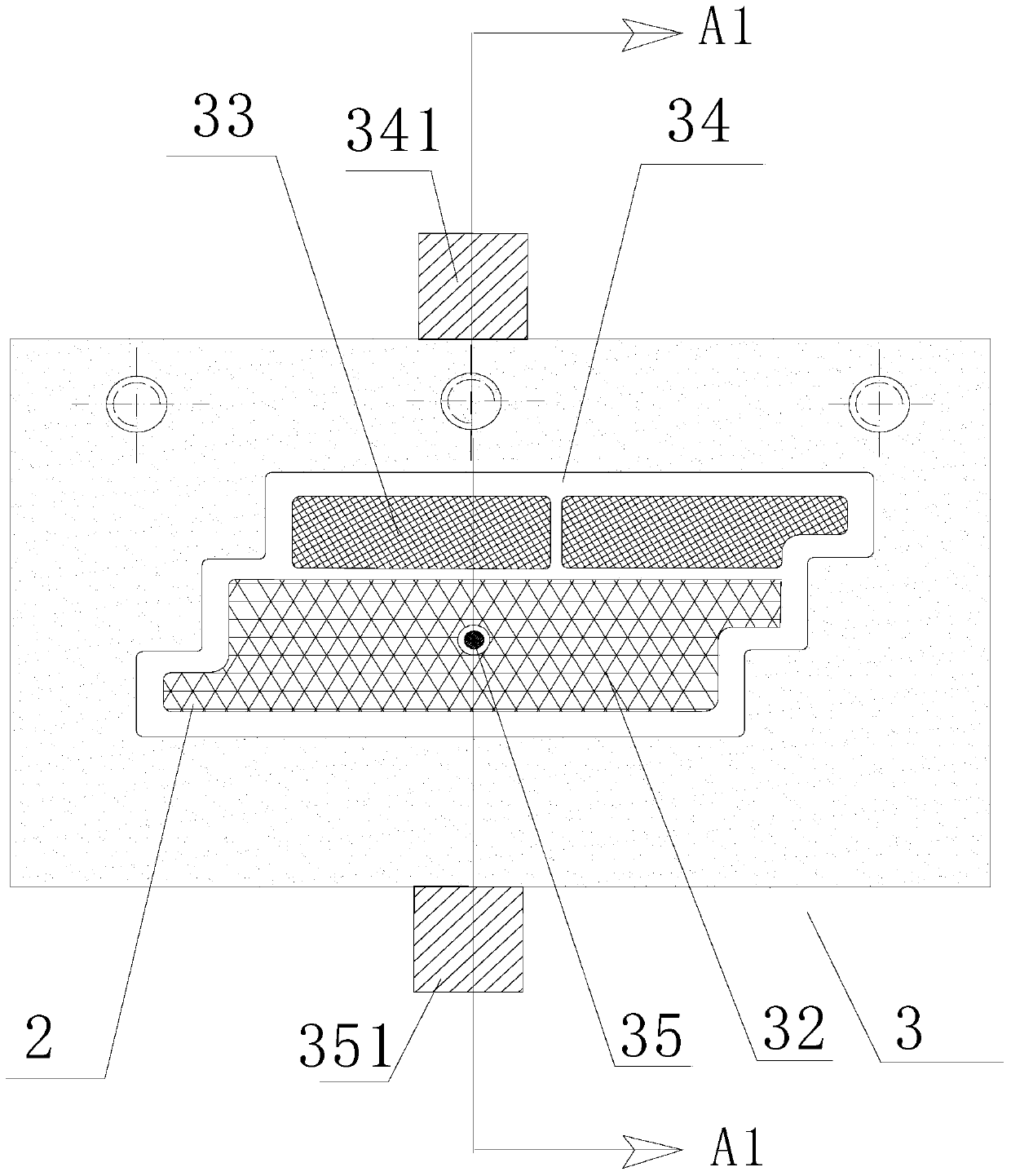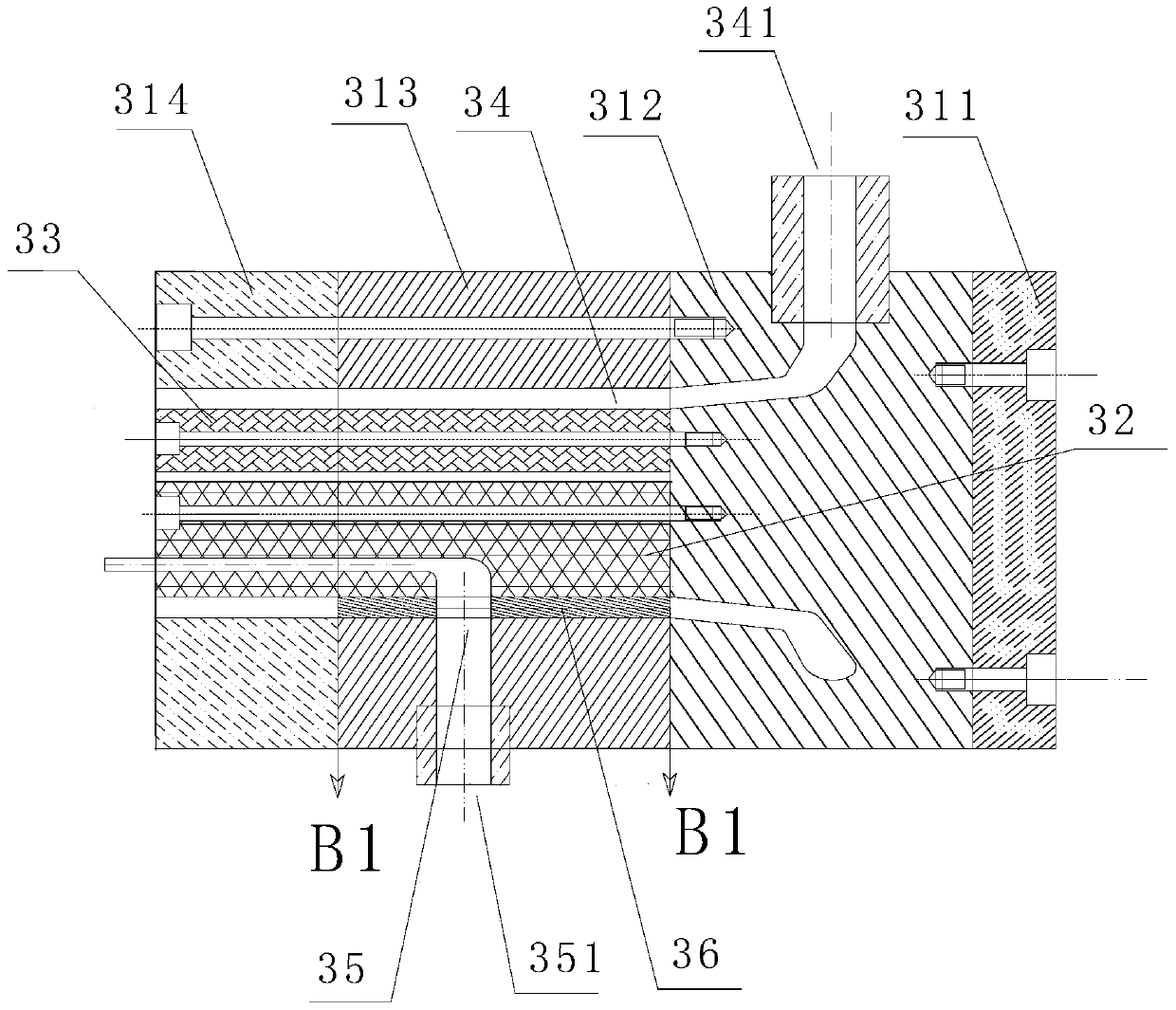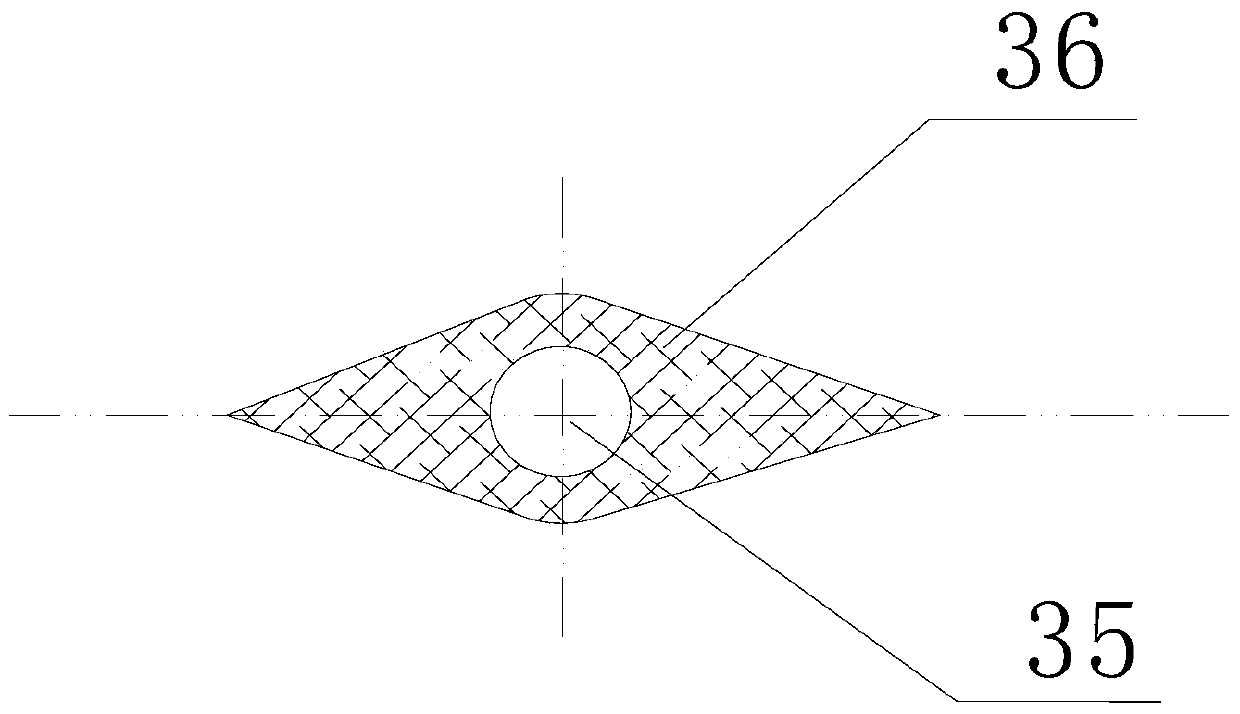Composite board formed by co-extrusion of wood-plastic and foam layer and preparation method thereof
A composite board and co-extrusion molding technology, which is applied in the direction of building components, buildings, building structures, etc., can solve the problems of lack of high-efficiency thermal insulation effect of wood decoration, difficulty in achieving density, and low foaming efficiency, so as to improve thermal insulation and sound insulation performance, improve physical strength, and save manpower and material resources
- Summary
- Abstract
- Description
- Claims
- Application Information
AI Technical Summary
Problems solved by technology
Method used
Image
Examples
Embodiment 1
[0040] (1) Weigh raw materials:
[0041] Weigh the raw materials of wood-plastic frame 1: 40 parts by weight of polyvinyl chloride, 35 parts by weight of wood powder (wood powder, particle size less than 1mm), 10 parts by weight of inorganic filler, 8 parts by weight of impact modifier, lubricant 2 parts by weight, 2 parts by weight of a stabilizer, 2 parts by weight of a compatibilizer, and 1 part by weight of a processing aid.
[0042] Raw materials of the foam inner layer: 70 parts by weight of polystyrene, 10 parts by weight of flame retardant, 5 parts by weight of cell regulator, 3 parts by weight of modifier, 1 part by weight of processing aid and 5 parts by weight of chemical foaming agent , 6 parts by weight of inorganic reinforcing agent.
[0043] (2) Manufacturing process:
[0044] The composite sheet is co-extruded by an extrusion die 3 . The extrusion die 3 includes a die body 31 and a first core 32 . The first core 32 is set in a cavity 34 formed on the die body...
Embodiment 2
[0066] This embodiment produces as Figure 6 The preparation method and raw materials of the composite plate shown are basically the same as those in Example 1. The difference is that: using Figure 5 Extrusion die shown.
[0067] Extrusion die: Figure 5 Dies shown can be fabricated Figure 6 Composite panels as shown, such as Figure 5 As shown, the extrusion die 3 includes a first core 32 and three second cores 33 .
[0068] Between the first mold core 32 and the second mold core 33 and the mold body 31 there are gaps for injecting molten wood-plastic material, so that the molten wood-plastic material enters these gaps to form the outer layer of the wood-plastic frame 1 .
[0069] Between the first mold core 32 and the three second mold cores 33, a gap for injecting molten wood-plastic material is provided, so that the molten wood-plastic material enters the space between the first mold core 32 and the three second mold cores 33. The gap, after cooling, forms the firs...
Embodiment 3
[0074] produce as Figure 7 Shown composite plate, its preparation method and raw material are basically the same as embodiment 2, difference is:
[0075] Extrusion die: the extrusion die 3 is only provided with a first core 32 , but not with a second core 33 . A gap for injecting molten wood-plastic material is provided between the first mold core 32 and the mold body 31, after the molten wood-plastic material enters the gap, the wood-plastic frame 1 of the composite plate is formed on the periphery of the first mold core 32, After cooling and forming, the composite board has only one first cavity, and the foam layer 2 is filled and bonded in the first cavity.
PUM
| Property | Measurement | Unit |
|---|---|---|
| density | aaaaa | aaaaa |
| density | aaaaa | aaaaa |
| density | aaaaa | aaaaa |
Abstract
Description
Claims
Application Information
 Login to View More
Login to View More - R&D
- Intellectual Property
- Life Sciences
- Materials
- Tech Scout
- Unparalleled Data Quality
- Higher Quality Content
- 60% Fewer Hallucinations
Browse by: Latest US Patents, China's latest patents, Technical Efficacy Thesaurus, Application Domain, Technology Topic, Popular Technical Reports.
© 2025 PatSnap. All rights reserved.Legal|Privacy policy|Modern Slavery Act Transparency Statement|Sitemap|About US| Contact US: help@patsnap.com



